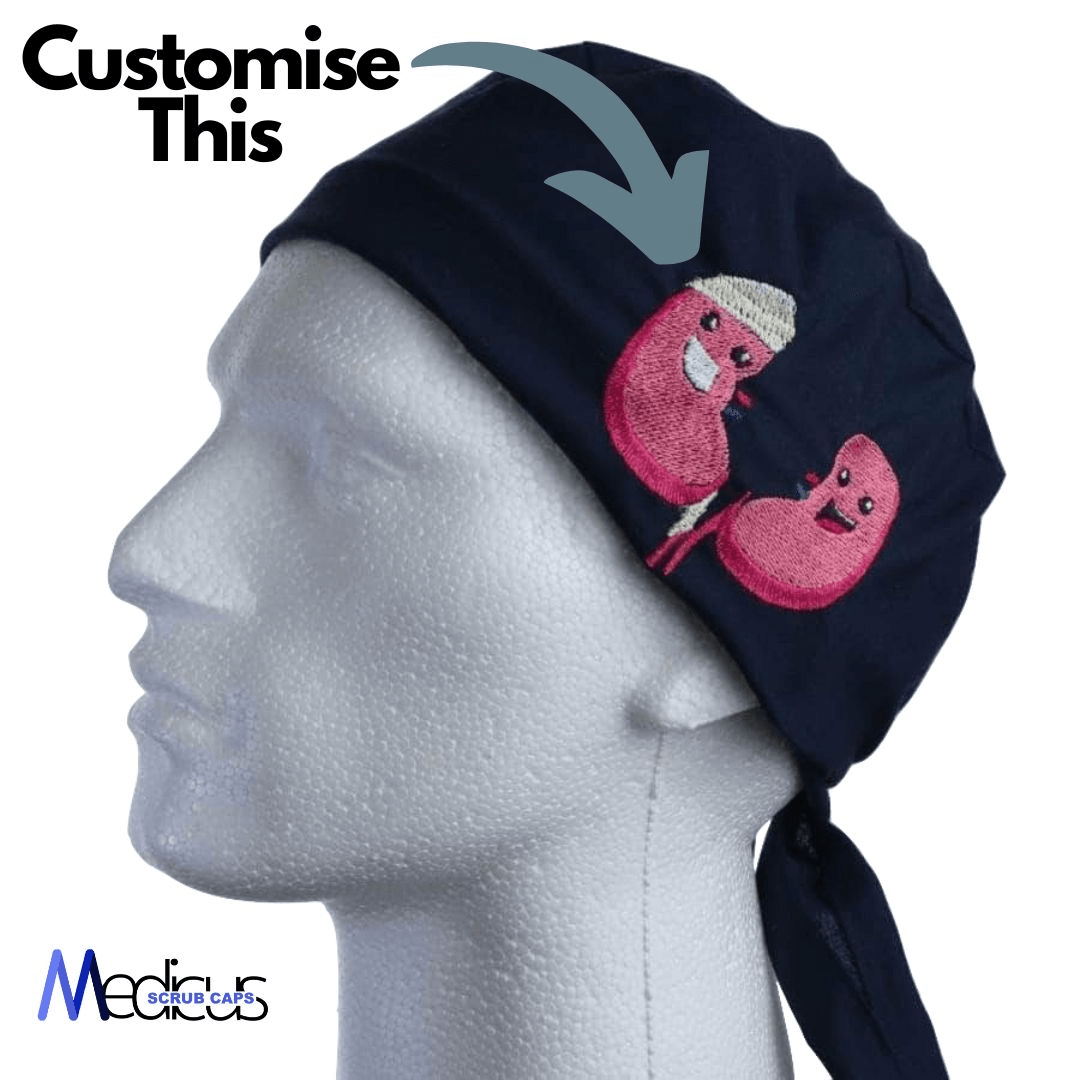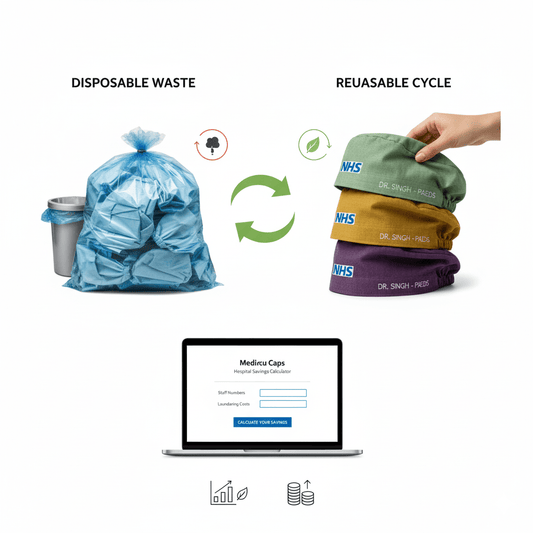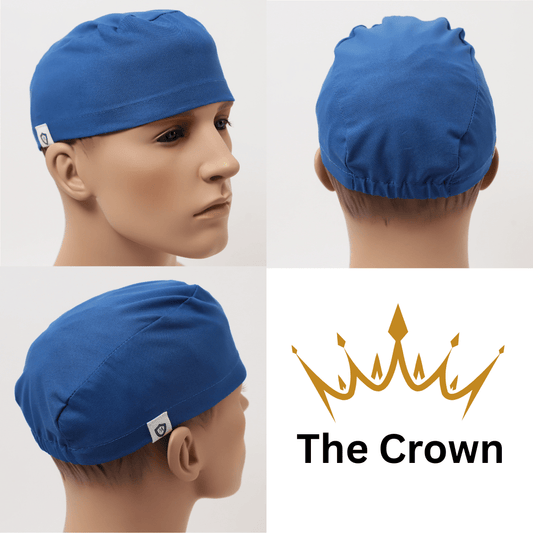
Scrub Caps: Enhancing Communication, Teamwork, and Safety in the OR
Names and Roles on Scrub Caps: Enhancing Communication, Teamwork, and Safety in the OR
In the operating room (OR), all team members wear similar scrubs, masks, and caps, making it hard to tell who is who. A simple intervention—writing each staff member’s name and role on their scrub cap—has emerged as a way to improve human factors in surgery. This practice, popularised by the “#TheatreCapChallenge,” has been adopted in many hospitals to address communication breakdowns. Below is a summary of studies and expert insights on how labeled scrub caps benefit OR teams in key areas:
1. Improved Communication Among Surgical Team Members
Clear identification of names and roles leads to more effective communication among surgeons, anaesthesiologists, nurses, and technicians. Instead of struggling to recall or guess names, team members can address each other directly, which reduces confusion and miscommunication. Research and trials have demonstrated notable improvements:
- Better Name Recall: In a Stanford randomised trial during C-sections, OR staff wearing labeled caps were far more likely to know their colleagues’ names (77.8% vs 55.0% without labeled caps) and roles (92.5% vs 78.3%). Similarly, an Australian pilot study found the median number of unknown names per staff member dropped from three to two after introducing name-tagged caps, and staff twice as often knew everyone’s name in the room.
- More Direct Address & Fewer Mix-ups: With names visible, team members use one another’s names more frequently during surgery, which facilitates directed questions and commands. This direct address helps ensure the right person hears and responds to requests. OR observers also noted a trend toward fewer missed communications when everyone wore name-tagged caps.
- Facilitating Closed-Loop Communication: Knowing names encourages closed-loop communication—where requests are acknowledged by name—which is vital for patient safety. One study found that instructions addressed to someone by name were completed 3.6 times faster than when no name was used.
2. Enhanced Teamwork and Collaboration
Visible names and roles on caps foster a stronger team dynamic in the OR. Teamwork in surgery depends on trust, clarity of roles, and the ease of speaking up—all of which improve when everyone is identifiable:
- Higher Teamwork Ratings: Studies report that staff perceive better teamwork after adopting labeled scrub caps. In multi-disciplinary surveys, up to 80% of clinicians said that having names/roles on caps improved teamwork in the OR.
- More Confidence to Speak Up: When team members know each other’s names and roles, it creates a more inclusive culture where individuals feel comfortable speaking up or asking questions. After implementing name/role caps, the frequency of proper team introductions and willingness to speak up about concerns increased significantly in several studies.
- Clarity of Roles = Better Coordination: Labeled caps often include the person’s role (e.g. “Dr. Smith – Surgeon,” “Jane – Circulating Nurse”), which helps everyone instantly recognise who does what. This prevents confusion and streamlines collaboration.
3. Increased Patient Safety and Reduced Medical Errors
Miscommunication is a leading cause of adverse events in surgery. By improving communication and teamwork, name-labeled scrub caps contribute to a safer environment and help reduce errors:
- Fewer Communication-Related Errors: The Joint Commission has long noted that communication breakdowns are a primary driver of serious surgical errors. Properly identifying team members lessens this risk, as critical messages are less likely to be missed or misunderstood.
- Better Surgical Safety Culture: Name/role identification has been embraced as a quick win for patient safety culture. Team members are more apt to alert each other to possible errors when they can address colleagues by name, reinforcing situational awareness and a “speak-up” climate.
- Fewer “Never Events”: Experts like Dr. Rob Hackett point out real-world impacts of the initiative. Quick identification in emergencies saves vital seconds and reduces the chance of misdirecting orders. In a crowded room during a crisis, labeled caps minimize confusion and help ensure the correct intervention is delivered promptly.
4. Greater Efficiency in the Operating Room
Surgery is time-critical, and any delay or misunderstanding can slow down the procedure. Having names and roles on scrub caps has been linked to smoother, more efficient operations:
- Faster Coordination and Response: With immediate recognition, staff execute requests more promptly. Directing queries or commands by name speeds up task completion, particularly under time pressures.
- Reduced Delays and Misidentifications: Labeled caps help avoid mix-ups that can waste time. Hospitals report fewer delays due to staff searching for the right person or clarifying who was called on.
- Higher Provider Productivity: Effective communication correlates with productivity. Surgical teams that routinely use names display better coordination, leading to smoother workflow and potentially allowing more cases to be handled safely.
Key Takeaways
Name & Role Identification on Caps Improves Communication: OR teams with names on their scrub caps experience clearer communication—more frequent use of names, fewer missed signals, and better recall of who everyone is.
Stronger Teamwork and Speaking-Up Culture: Knowing colleagues’ names and roles builds trust and camaraderie. Surveys and studies show a marked boost in perceived teamwork quality and willingness to speak up about concerns.
Enhanced Patient Safety: By improving communication and teamwork, labeled caps help catch and prevent errors. Staff can quickly alert the right person to fix an issue, and critical requests won’t be lost in confusion.
Greater Efficiency in the OR: Labeled scrub caps streamline OR workflow. Teams spend less time clarifying or correcting miscommunications and more time getting things done. Directly addressing colleagues by name has been linked to higher efficiency and productivity in clinical environments.





